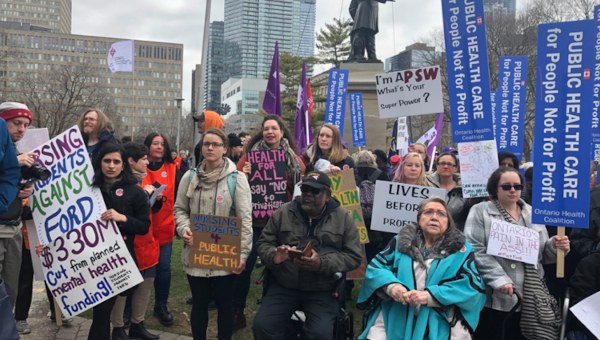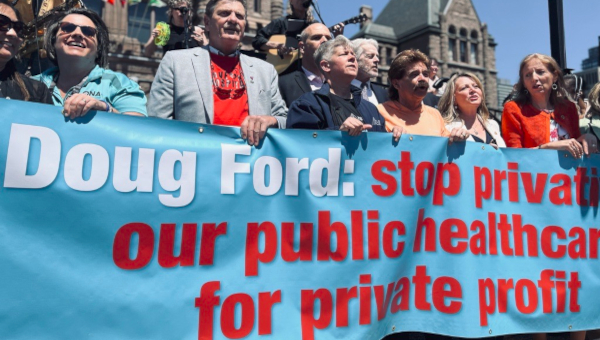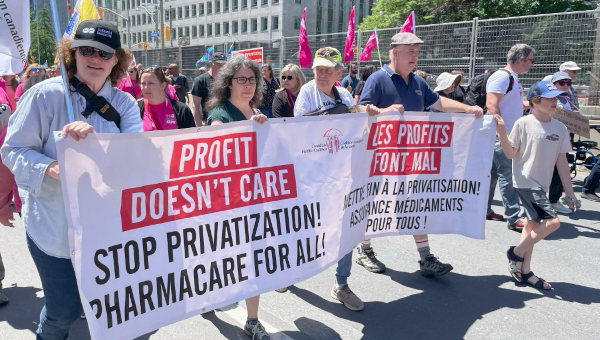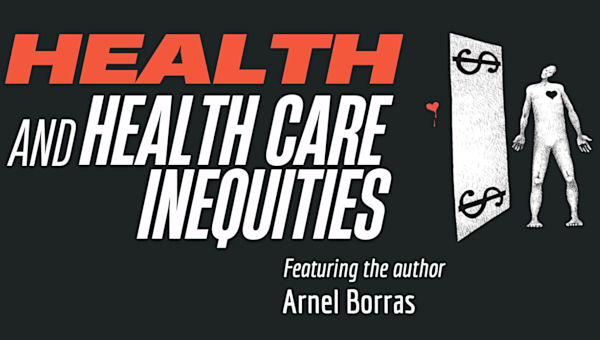Hospital, Long-term Care Funding Cut by the Ford Conservative Government
The Financial Accountability Office has released the Ford PC government’s funding plans for the various healthcare sub-sectors. The news is not good.
The funding plans for 2022/3 in several key line items are down compared to actual funding in 2021/2:

- Funding plans for long-term care services are down $26-million – or down 0.4% compared to last year’s actual funding.
- Overall funding to the Ministry of Long-Term Care (LTC service funding plus LTC Capital and Development funding) is down $315-million, with the LTC Capital line item down a full $376-million. The LTC Development line item was also completely unspent over the last five quarters. These are mysterious changes when there is a 38,000 person LTC wait list, a desperate shortage of LTC facilities that meet modern design standards, new legislation that forces hospital patients to move into LTC facilities they did not choose, and frequent claims by the government that it is quickly building new high quality LTC facilities.
- Funding plans for hospital services are down $166-million – or down 0.7%.
- Funding plans for municipal ambulance operations are down $95-million.
- Funding for “Official Local Health Agencies” (largely for public health units) is down $156-million or 13%.
- Cancer Treatment Services funding is down $65-million or 3.1%.
- In contrast, planned funding for home care operations is up significantly: $404-million or 12%.
- COVID health funding is up compared to last year’s actual funding. But take this with a grain of salt. Last year, the government only spent 58% of this line item and, this year the government is on track to underspend the budget once again. In the first quarter of 2022/23, it only spent 14.7% of this line item’s budget. This funding “increase” may turn into a funding decrease.
- Community Mental Health Services funding is up $270-million (27%) but this only brings that sector back to the funding level planned in the 2021/2 Budget. The sector’s funding was cut by $273-million in the 4th quarter of 2021/2 after funding levels fell short of the target in the first three quarters. Notably, the sector’s actual funding is off to a very slow start in 2022/3 as well.
Budgeted funding for the health sector (the ministries of health and long-term care)is up 2.9% overall from last year’s actual spend – that is, up by $2.17-billion. Drugs and doctors will get more than $1.25-billion (or 58%) of that increase, however, and another $435-million extra is budgeted for COVID and Community Mental Health Services funding – funding increases that have not actually been implemented in the first quarter.
Even if the increase was distributed evenly, 2.9% would not offset cost pressures – which are way up beyond the normal 5.3%, due to surging inflation.
Much worse, it is incredible that the government’s plan is to cut hospital and LTC funding when we are facing an unprecedented staffing crisis and high inflation.
If the Ford government gets its way, this will mark the end of the relatively large health care funding increases achieved by working people during the first two years of COVID.
For example, even with the new-found stinginess of the 2022/23 Budget, the plan is to allot the health sector $75.6-billion – almost $14-billion (22.5%) more than the original 2020/21 plan. Significant changes can also be achieved after the Budget – the health sector received $2.3-billion (3.2%) more in 2021/2 than originally budgeted. The public demands for public health care paid off, forcing the government to rethink its plans mid-year.
The government is saying through the 2022/3 budget that those days of big increases are done – and austerity is back. We shall see if they get their way.
Compounding this trend toward austerity is that actual funding in the first quarter for “health services” (line item 1416-1, mostly for hospital services) was $200-million below the budget plan. Not only do they plan to spend less, they are not even spending what they planned.
For overall provincial program spending on healthcare and all other social programs, the province is on track to under-spend its Budget once again: the province under-spent its overall first quarter plan by 1.9% or $776-million. The government has also established a huge $4.6-billion contingency fund that remains untouched. Last year’s $2-billion contingency fund was also completely unspent.
Given that the government is dramatically underestimating its own revenue (see this note), we are on track for a significant reduction in the planned deficit (barring the onset of an economic crisis). This would continue the trend. Over the last two years the PC government has overestimated deficits by an astounding $57.3-billion, thereby achieving record miscalculations.
This also means there is, at this moment, significant room to push program spending higher – just as community and labour very successfully did last year and the year before that.
Privatization
Independent Health Facilities (“IHFs” – for-profit surgical and diagnostic clinics) saw a big funding increase from the government in the fourth quarter of 2021-2, increasing their actual funding to $66-million for that year. Curiously, their planned funding has been drastically cut back to only $39-million in 2022-23. This sits at odds with the government’s intention of privatizing hospital surgeries. It’s far from clear what is going on – but something may be afoot.
IHFs providing surgical services remain bit players in Ontario – with perhaps 13 operators doing a tiny range of operations (abortion, eye surgery, plastic surgery). The money is relatively minor ($20.475-million funding reportedly in 2019/20). They would have to step up their game considerably to be anything but marginal when public hospitals operate with a thousand times more revenue.
So it is, perhaps, notable that the Ontario Medical Association (OMA) has recently gone public with their plan to develop a new clinic model to replace IHFs over the next five to eight years, complete with new legislation.
Their chosen name for these clinics – “Integrated Ambulatory Centres” – obscures the fact that privatization inherently fragments care by creating different centres of control each with its own private interest. The OMA’s suggestion that it makes little difference if the clinics are for-profit or not-for-profit sounds off. And so too does the claim that private clinics can serve rural areas – when private clinics famously focus on large urban centres where the money is.
In my view, the OMA will not do itself, nor its profession, any favours if it becomes a backer (publicly or in the back rooms) of privatization. •
This article first published on the Defend Public Healthcare website.





